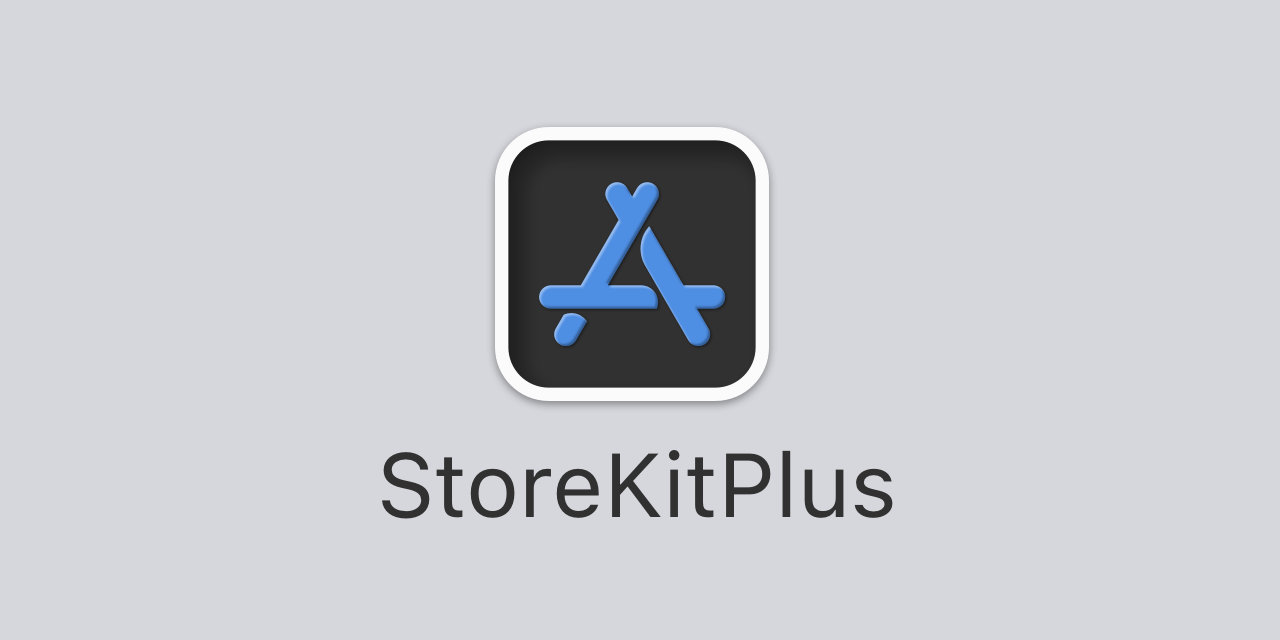Introducing StoreKitPlus
Jun 24, 2022 ·
In this post, let’s take a look at StoreKitPlus, which adds extra functionality for working with StoreKit 2 to make it easier to use StoreKit in SwiftUI.

Background
StoreKit 2 is a huge improvement to StoreKit 1. Gone are many notifications, transaction states etc. that you had to handle. The new APIs are very simple to use and behave great.
However, I have found some things missing, like an easy way to observe store-specific state and let it drive SwiftUI updates, the possibility to mock the StoreKit integration, persisting product & purchase information, setting up local product representations, etc.
As such, I’ve created StoreKitPlus as a tiny layer on top of StoreKit 2. It adds observable state, an abstract store service protocol, a concrete store service implementation as well as protocols for validating transactions and specifying local product representations.
StoreKitPlus is easy to start using and can be extended with custom logic, if you need to. Let’s take a look at what it contains.
Getting products
To get products from StoreKit 2, you can use the Product.products api:
let productIds = ["com.your-app.productid"]
let products = try await Product.products(for: productIds)
However, if you need to do this in an abstract way, e.g. to mock the functionality in a test, extend the core functionality, etc., StoreKitPlus’s StoreService has a getProducts():
let productIds = ["com.your-app.productid"]
let products = try await service.getProducts()
The StandardStoreService implementation communicates directly with StoreKit and syncs the result to an observable StoreContext. Read more on this context further down.
Purchasing products
To purchase products with StoreKit 2, you can use the Product.purchase api:
let result = try await product.purchase()
switch result {
case .success(let result): try await handleTransaction(result)
case .pending: break
case .userCancelled: break
@unknown default: break
}
return result
If you need to do this in an abstract way, StoreService has a purchase(_:) function:
let result = try await service.purchase(product)
Just like with getting products, StandardStoreService communicates directly with StoreKit and syncs the result to a provided, observable StoreContext.
Restoring purchases
To restore purchase with StoreKit 2, you can use the Transaction.latest(for:) api and verify each transaction to see that it’s purchased, not expired and not revoked.
This involves a bunch of steps, which makes it pretty complicated. To simplify, you can use the StoreService’s restorePurchases() function:
try await service.restorePurchases()
Just like before, StandardStoreService communicates directly with StoreKit and syncs the result to a provided, observable StoreContext.
Syncing store data
To perform a full product and purchase information sync with StoreKit 2, you can fetch all products and transactions from StoreKit, then set your local state to reflect this information.
This involves a bunch of steps, which makes it pretty complicated. To simplify, you can use the StoreService syncStoreData() function:
try await service.syncStoreData()
Just like before, StandardStoreService communicates directly with StoreKit and syncs the result to a provided, observable StoreContext.
Observable state
StoreKitPlus has an observable StoreContext that provides observe state for your app.
You can inject a store context into a store service, to have the service automatically update the context, which drives your UI to automatically update when anything changes:
let productIds = ["com.your-app.productid"]
let context = StoreContext()
let service = StandardStoreService(
productIds: productIds,
context: context
)
The context lets you keep track of available & purchased products, and will cache the IDs of products & purchased products, which can be mapped to local product representations if the app is later offline.
To observe a context, your app can just inject the context instance into the view hierarchy:
struct MyApp: App {
var body: some Scene {
WindowGroup {
ContentView()
.environmentObject(context)
}
}
}
Any view can then resolve it to update whenever anything in the context changes:
struct MyView: View {
@EnvironmentObject
private var context: StoreContext
var body: some View {
...
}
}
The context will now be automatically kept in sync when the user uses the service in your app, which will automatically update the UI in the app.
Local products
You can use the ProductRepresentable protocol to provide a local representation of your StoreKit product collection,
This protocol is an easy way to provide product representations that can be matched with your real products, for instance:
enum MyProduct: CaseIterable, String, ProductRepresentable {
case premiumMonthly = "com.myapp.products.premium.monthly"
case premiumYearly = "com.myapp.products.premium.yearly"
var id: String { rawValue }
}
You can now use this collection to initialize a standard store service:
let products = MyProduct.allCases
let context = StoreContext()
let service = StandardStoreService(
products: products,
context: context
)
You can also match any product collection with a context’s purchased product IDs:
let products = MyProduct.allCases
let context = StoreContext()
let purchased = products.purchased(in: context)
While communication with the StoreKit APIs requires real products, this lets you display a product collection and its purchase state while the app is offline.
Conclusion
StoreKitPlus is easy to use and adds a bunch of convenience utilities on top of StoreKit 2. I will add more functionality if I see the need, otherwise it will be kept intentionally tiny.
If you want to git StoreKitPlus a try, you can test it here. I’d love to hear your thoughts on it, so don’t hesitate to comment, leave feedback etc.
Discussions & More
If you found this interesting, please share your thoughts on Bluesky and Mastodon. Make sure to follow to be notified when new content is published.